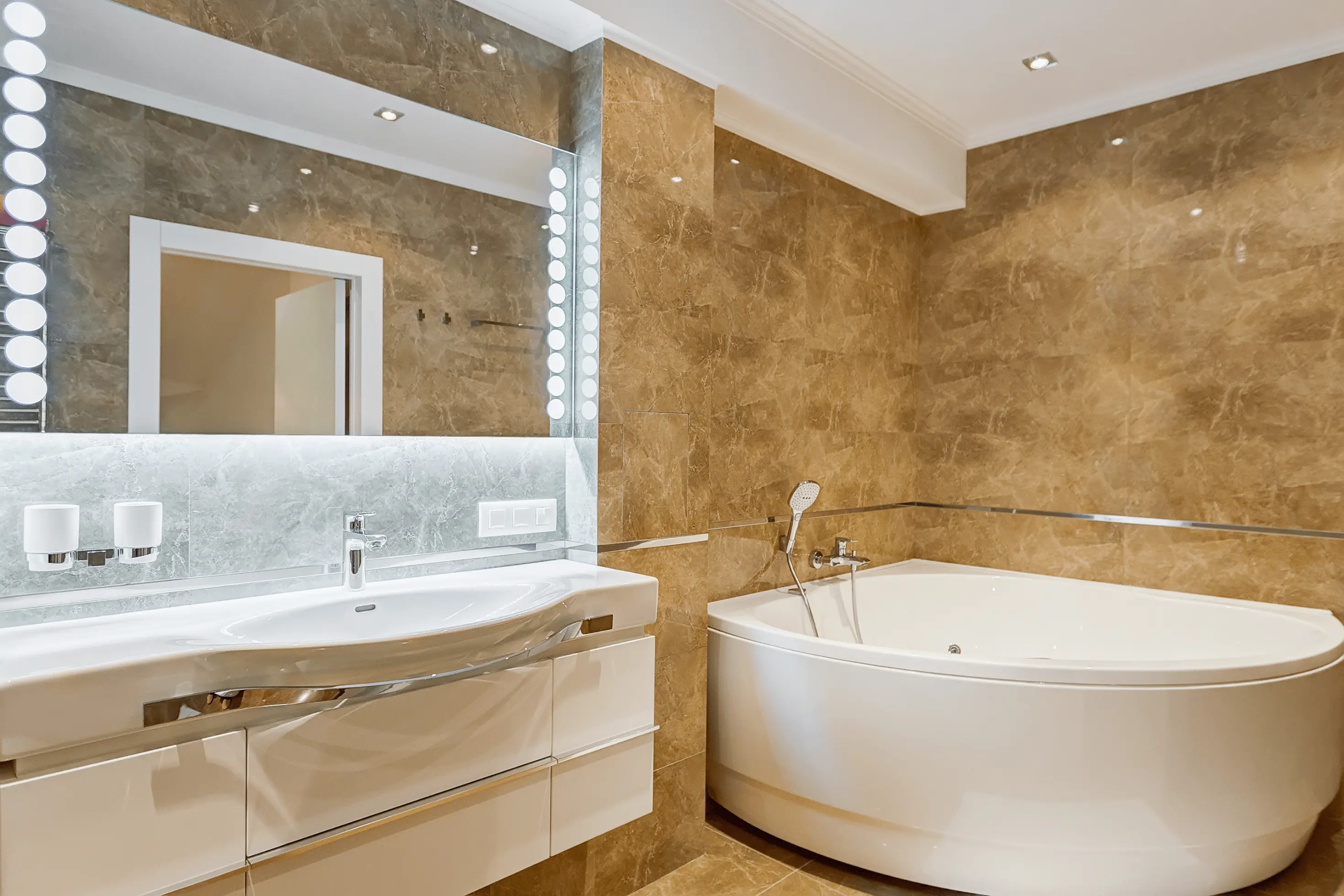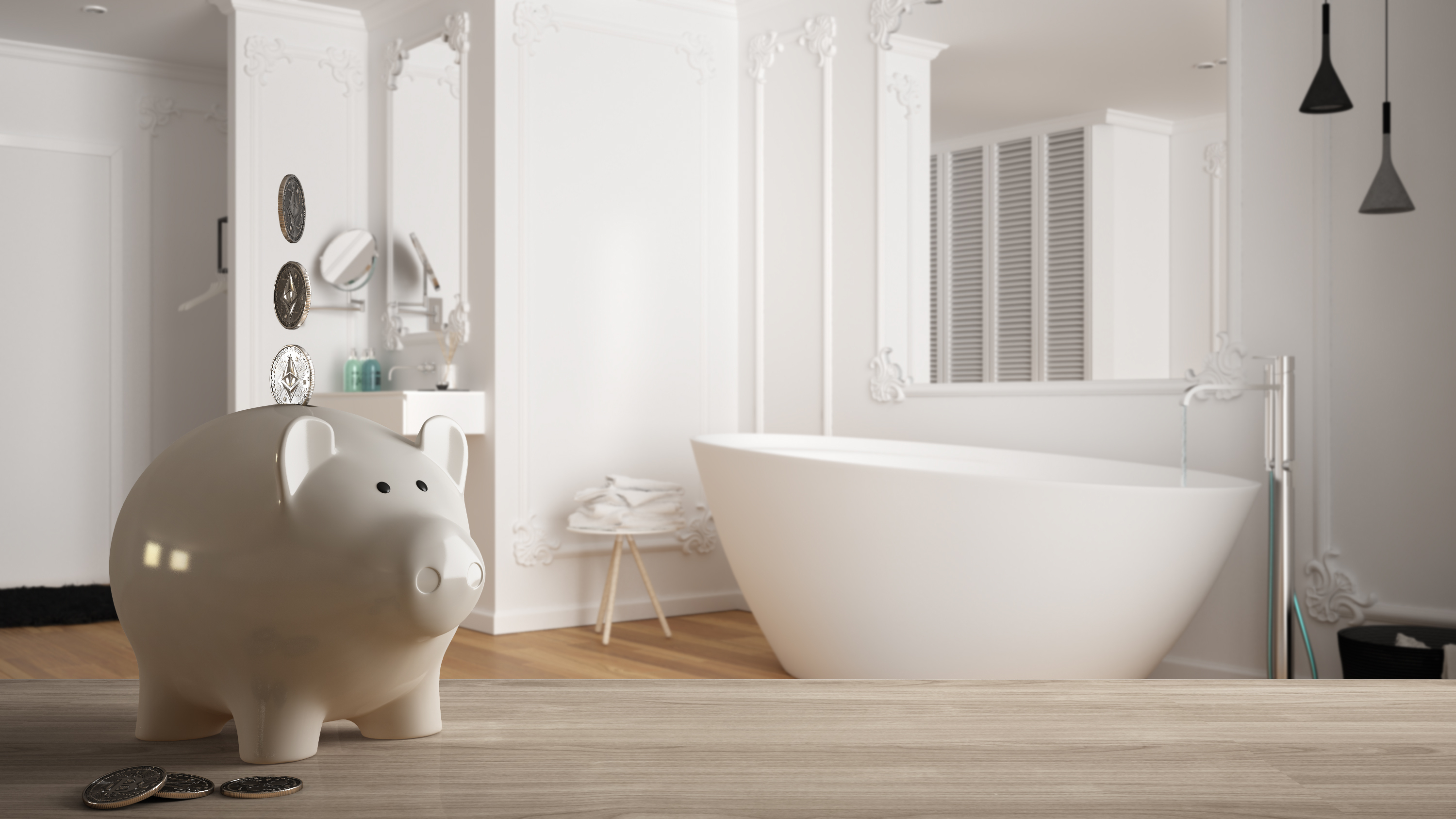The cost of living crisis is one of the worst periods the UK has seen since the 1980s in regard to inflation rates and ever-increasing energy bills. This period is therefore dictating how we spend our well-earned money, and also encouraging many of us to save money on resources where possible.
As with all forms of energy, water is a vital life-sustaining element needed for day-to-day life, especially in the bathroom. Whilst many of us have already reduced our water usage for money-saving and environmental reasons, there’s always more we can do.
Read our expert guide below to discover water-saving tips and tricks you might have not tried before.
How To Save Water At Home In The UK
We’ve all heard and implemented the simple tips for saving water at home. Turning the tap off while brushing your teeth and reducing your shower time have become routine, but what about the more drastic changes?

Find out how to save water in your bathroom more consistently.
Install Water Saving Taps
If you’ve never heard of water-saving taps, you might almost find it difficult to believe they exist.
What Is A Water Daving Tap?
There are many options on the market for water-saving taps, all of which can be a little different.
A water-saving tap reduces water flow in the spout with the use of intelligent developments in plumbing. This could be through the use of an aerator, self-closing taps (like you would find in public bathrooms), switch-off sensors, or pre-installed reduced flow rate.
To give you an idea, a dated ½” basin tap would use approximately 9-10 litre's of water a minute. However, you’ll find the majority of taps here at Bathroom Takeaway have a flow rate of approximately 6.5 litres per minute, which is a considerable saving.
For example, the Nairn Mono Basin Mixer Tap, Iguazu Mono Basin Mixer Tap , and Alban Bath Mixer Tap all have an average flow rate of 6.5 litres.
Check out our full range of taps and pay specific attention to the average flow rate to determine if you could be making additional savings with water-saving taps.
Install A Dual Flush Toilet
Similar to taps, there is a huge variety of toilets available in the bathroom industry but none are more cost-effective than a dual flush toilet.
How Does A Dual Flush Toilet Work?
A dual flush toilet is a cistern mechanism that allows for two individual types of flush and therefore comes with a dual push button. The internal flush valve operates depending on which side of the button you push. The smaller side of the button gives the option for half flush which subsequently uses less water than a full flush.
The best thing is, you wouldn’t have to look to replace your whole toilet to install a dual flush. You could simply elevate your toilet to a dual flush mechanism by replacing the cistern and button, of course depending on what type of toilet you already have installed.
Install A Water Saving Shower Head
Another way to reduce your water bill is to look into swapping your standard shower head for a water-saving shower head.
How Does A Water-Saving Shower Head Work?
Different types of shower head vary based on spray pattern and flow control. Water-saving shower heads operate by combining temperature-controlled water with air. This allows a high-pressure experience whilst reducing water usage.
The Grohe Grohterm 800 Thermostatic Shower Mixer is a guaranteed money-saver with a flowing limiting selling feature that reduces your water usage by 50%. Due to the clever technology, you can still shower in comfort with a full spray every time so you won’t even notice the difference, except in your bills!
For more advice on selecting water-saving shower heads, check out our recent guide on electric underfloor heating or electric heated towel rails.
Make Changes To Your Bathing Routine
Undeniably when comparing standard water usage for baths and showers, it can accurately be assumed that a bath uses much more water than a shower. But if you’re unable to give up a soak in the tub as many people are, there are still ways to reduce your water usage.
Baths come in all shapes, sizes and most importantly materials. If you choose to invest in an acrylic bath, you’re investing in thermoplastic technology which means your bath would have thermal insulation properties. In turn, this means your bath water would retain heat for longer in comparison with baths of other materials. Therefore, you wouldn’t be having to top up that hot water during your soak!
Another easy solution to save water during bath time is to simply reduce the amount you’re filling the bath. If you reduce this by half, you could be saving an estimated 50 litres of water per use. If using your bath daily, that totals 18,250 litres per year! Now imagine what that would look like on your water bill…
Read our recent article on the benefits of baths vs. showers for more tips on how to save water whilst still utilising the bath.
Regularly Check For Leaks And Drips
A leaking or dripping tap is an easy problem to ignore for long periods of time, but how much are they costing you? It’s estimated that a tap with a constant drip can cost a staggering £300 on top of your water bill each year!
So, there’s never a better time (or incentive) to resolve any leaks and drips by replacing dripping taps. The majority of the taps here at Bathroom Takeaway come with ceramic disc technology meaning they’re less prone to leaks, and are bound to last much longer than standard taps.
How To Identify An Undetected Leak?
The best way to ensure you haven’t got a secret leak is to pay close attention to your water metre and bill. If you have a sudden unexplained increase, you may have an unresolved leak.
You may also be able to hear a leak or drip but cannot find where it is coming from. Don’t hang around if you’re in this scenario, be sure to draft in a reputable plumber who will quickly be able to determine and resolve any leaks.

Water Saving FAQs
How Much Water Does A Bath Use?
A typical standard bath is a 1700x750mm straight bath which holds an estimated 180 litres of water. However, you can discount roughly 80 litres from that as that would be from bottom to rim.
Baths are available in many shapes and sizes nowadays, so be sure to measure yours before making your estimate.
How Much Water Does A Shower Use Per Minute?
The amount of water your shower uses per minute very much depends on the type of shower you have installed. However, on average a standard shower uses approximately 10 litres of water per minute.
Why Should We Save Water?
There are many considerations around the water-saving topic. The first and possibly most dominant one is to help protect the environment for now, and the future. Our water supply is sourced from wetlands and rivers and in times of over usage, this can put great pressure on these natural areas, affecting habitats and the ecosystem as a whole.
Of course, when looking to save water in and around your home, you can also benefit from reduced costs and a smaller water bill!
If you are both cost and environment-conscious, take a look at our recent post on 5 Ways to Make your Bathroom More Sustainable .
Alternatively, get in touch with our expert team for more guidance on cost saving bathroom solutions.



























